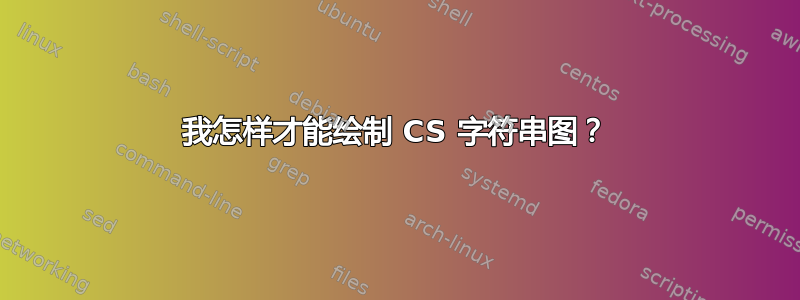
答案1
这里有一个方法可以实现Tikz。
基本思想:
- 画一些线
\node为下面的标签添加一些s\draw上面有一些装饰过的小路- 记住相关
coordinate内容以支持这些行动 - 定义
/.styles 可以简化代码,并且只需在一个地方更改参数 - 尝试一种平衡的方法,对于新手来说这并不难理解,并且使用一些路径特性来获得更好的代码
行:
让我们消化一下第一个。
\draw[bar] (0,0) coordinate (A) -- (1.5,0) coordinate (B) node[a]{$a$};
考虑画一条简单的线,首先在绝对坐标中:
\draw (0,0) -- (1.5,0);
因为Tikz是关于以分号结尾的路径;,我们可以添加一个节点,同时\在路径结束前删除。因此,这个在到达 (1.5,0) 后放置一个带有文本 (标签) 的节点;它接受具有某种样式的文本a,即在数学模式下$a$:
\draw (0,0) -- (1.5,0) node[a]{$a$};
把线条的样式信息放在前面,并留给开头的样式部分来详细指定在这里绘制什么:
\draw[bar] (0,0) -- (1.5,0) node[a]{$a$};
最后将\coordinate语句添加到路径中,以记住某些位置,并删除,\因为它仍然在要绘制的相同路径中。就是这样:
\draw[bar] (0,0) coordinate (A) -- (1.5,0) coordinate (B) node[a]{$a$};
其他路径也类似,使用相对移动--++(1.5,0)、绝对坐标的混合,并利用这些节点的最小宽度(此处定义为 5mm)的知识。当然,这可以更系统地完成。
标签如下:
% ~~~ labels below ~~~~~~~~~~
\node[mth] at (A) {$1$};
\node[mth] at ([xshift=-2.5mm]C) {$f(i) + 1$};
这很简单。第一行使用 style将文本$1$放在记住的位置,这会将文本在 y 方向上向下移动一点。(A)mth
第二个非常相似,除了像我一样放置节点会引入一些复杂性$a$。因此,纠正位置的一种方法是使用(C)并将其向后移动一点(最小宽度的一半):
([xshift=-2.5mm]C)。
过度支撑:
% ~~~ labels above ~~~~
\draw[decorate,blue] ([ys]A) -- ([ys]B) node[alf]{$\alpha$};
\draw[decorate,blue] ([ys]D) -- ([ys]E) node[alf]{$\alpha$};
它结合了上述概念,同时使用decorate由 tikz-library 提供的decorations.pathreplacing:
- 它绘制了一条从(A)上方到(B)上方的路径
- 用括号代替
- 穿蓝色衣服
- 将节点放在 $\alpha$ 中间稍上方。
样式块:
\begin{tikzpicture}[
a/.style={anchor=west,minimum width=5mm}, % for the node containing "a"
bar/.style={{Bar[]}-{Bar[]}}, % start- and end-tipps as Bars
bar2/.style={-{Bar[]}}, % only end-tipp as bar
mth/.style={yshift=-5mm}, % for placing the math-labels
decoration=brace, % the overbrace
alf/.style={midway,yshift=3mm}, % placing \alpha there
ys/.style={yshift=5mm}, % shortcut for these yshifts
]
至少对我来说,这一部分是随着我的进步而发展的,例如:
- 回想一下上面描述的线条部分
- 直接为
draw和放置有用的样式选项node - 它们是否太长?或者我至少需要两次?
- 然后将它们移到这里,并进行一些有用的命名
- 这样以后我就可以轻松地在这里调整所有这些标签移位等
代码:
\documentclass[10pt,border=3mm,tikz]{standalone}
\usetikzlibrary{arrows.meta}
\usetikzlibrary{decorations.pathreplacing}
\begin{document}
\begin{tikzpicture}[
a/.style={anchor=west,minimum width=5mm}, % for the node containing "a"
bar/.style={{Bar[]}-{Bar[]}}, % start- and end-tipps as Bars
bar2/.style={-{Bar[]}}, % only end-tipp as bar
mth/.style={yshift=-5mm}, % for placing the math-labels
decoration=brace, % the overbrace
alf/.style={midway,yshift=3mm}, % placing \alpha there
ys/.style={yshift=5mm}, % shortcut for these yshifts
]
% ~~~ lines ~~~~~~~~~~~~
\draw[bar] (0,0) coordinate (A) -- (1.5,0) coordinate (B) node[a]{$a$};
\draw[bar] (2,0) coordinate (C) -- (3.5,0) coordinate (D);
\draw[bar2](3.5,0) --++(1.5,0) coordinate (E) node[a]{$a$};
\draw[bar] (5.5,0) --++(1.5,0) node[a]{$P$};
% ~~~ labels below ~~~~~~~~~~
\node[mth] at (A) {$1$};
\node[mth] at ([xshift=-2.5mm]C) {$f(i) + 1$};
\node[mth] at (D) {$i - f(i) + 1$};
\node[mth] at ([xshift=+2.5mm]E) {$i + 1$};
% ~~~ labels above ~~~~
\draw[decorate,blue] ([ys]A) -- ([ys]B) node[alf]{$\alpha$};
\draw[decorate,blue] ([ys]D) -- ([ys]E) node[alf]{$\alpha$};
\end{tikzpicture}
\end{document}




